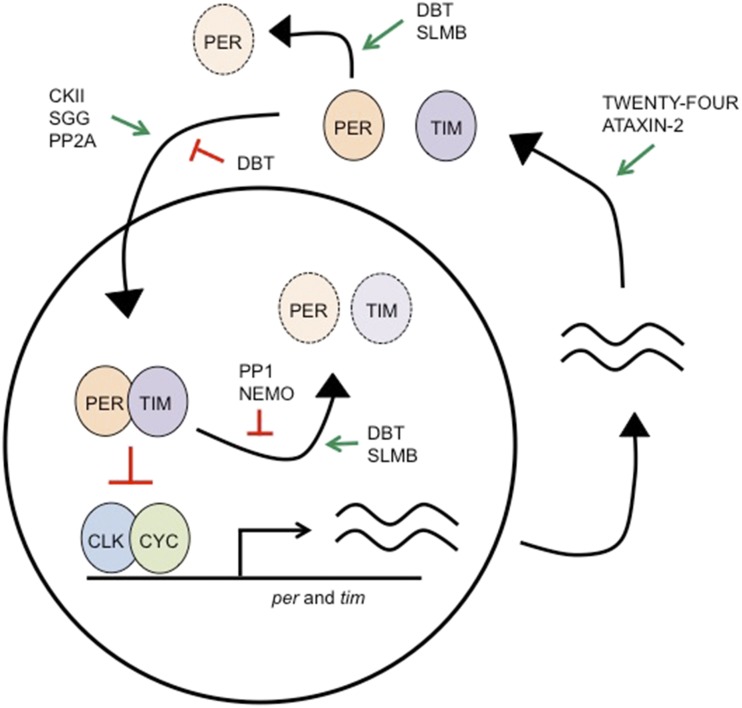Figure 2.
The molecular feedback loop is formed by the negative feedback of Period (PER) and Timeless (TIM) on their own transcription. Delays exist between transcription of per and tim mRNA and the localization of these proteins in the nucleus, where they can interact with transcriptional activators Clock (CLK) and Cycle (CYC). These delays are thought to be important for allowing the molecular clock to cycle with a period of ∼24 hr. Critical regulators have been identified at several steps of the cycle that are necessary for accurate timing and strength of molecular rhythms. Degradation of PER and TIM allows the cycle to start anew. Not pictured is the second feedback loop formed by PDP1 and Vrille, which produces cycling of Clk mRNA. This secondary feedback loop is thought to reinforce molecular oscillations, although cycling of the CLK protein is not necessary for rhythms. CKII, Casein Kinase II; SGG, shaggy; PP2A, Protein Phosphatase 2A; PP1, Protein Phosphatase 1; DBT, doubletime.

